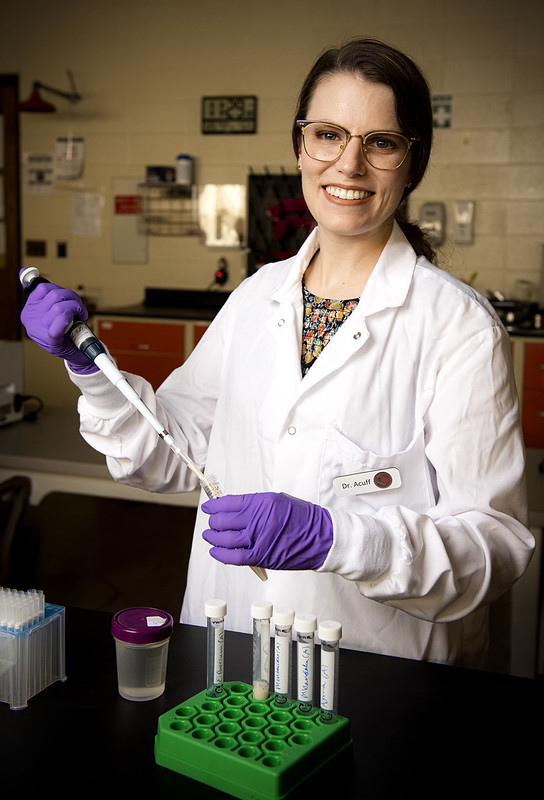ARKANSAS SCIENTIST LANDS $200,000 GRANT TO INVESTIGATE LOW-MOISTURE FOOD SAFETY
A food safety researcher at an Arkansas agricultural experiment station has won a $200,000 grant from the US Department of Agriculture (USDA) National Institute of Food and Agriculture to learn more about how much moisture is required to allow bacteria to survive in low-moisture foods.

Keeping dry foods safe for consumption is vital for food processors and Jennifer Acuff, assistant professor in food safety and microbiology at the University of Arkansas System’s division of agriculture, is working on just that topic. The grant she received will help develop foundational knowledge on how bacteria persist in low-moisture food processing environments.
Acuff said: “We don’t really know how much water or nutrients are required to sustain these contaminating populations, but we know they can persist in the dry environment for a long time. Our goals for the grant are to develop protocols for a laboratory that simulate these ‘persistent populations’ so that we can study how to prevent their formation or mitigate the risks once they do form.”

A two-year study in Arkansas
Results from the scientist’s two-year research grant will provide information and recommendations to processors for improving low-moisture food safety. The Centers for Disease Control and Prevention (CDC) and the US Food and Drug Administration (FDA) have reported several incidences of food borne illness outbreaks from low-moisture foods.
The most recent has been from Cronobacter infections from powdered infant formula this year. The CDC stated that the Cronobacter infections may have contributed to the cause of death for two patients. Nuts, dried fruits, powdered drinks, dry pet food, seasonings, and some candy and snack foods are other examples of foods that could benefit from the research in Arkansas.
“Many low-moisture foods are also considered ready-to-eat, so this puts consumers at a particular risk because they are not expecting the food to be unsafe and will not be doing anything to it that could kill pathogens, such as cooking,” pointed out Acuff.
Low-moisture foods: a common infection source
Hundreds of illnesses, sometimes resulting in hospitalizations, have been reported from consuming contaminated low-moisture foods infected with Salmonella, and Shiga toxin-producing E. coli. Listeria monocytogenes has also been the cause of recalls, according to reports from the CDC and FDA. In recent years, the agency has reported foodborne illnesses from pathogens in several brands of baking flour, a soy-nut butter, a dried coconut product and a cake mix, among others.
As part of her study, Acuff will examine how cross-contamination can occur from persistent bacterial populations to non-contaminated product in the presence of limited water and nutrients. She will also identify a suitable surrogate microorganism that is non-pathogenic but can mimic the behaviour of a pathogen, so that the laboratory results can be validated in food processing plants without introducing a pathogen into the environment.
Join us at SIAL Paris as exhibitor Join us at SIAL Paris as visitor
